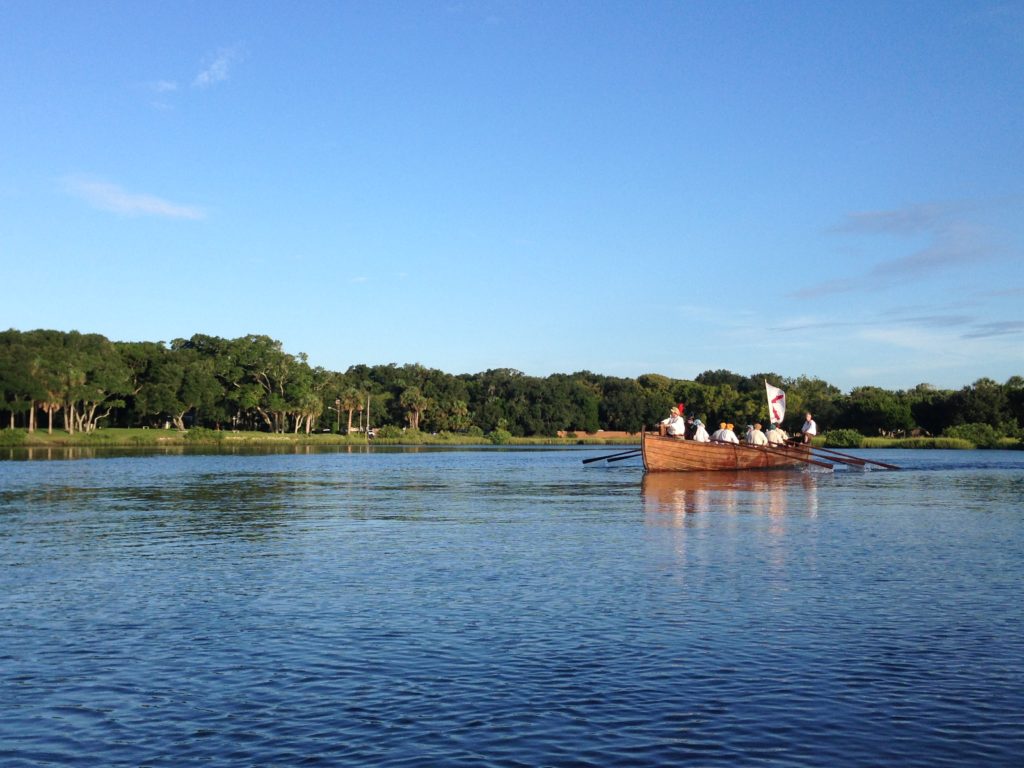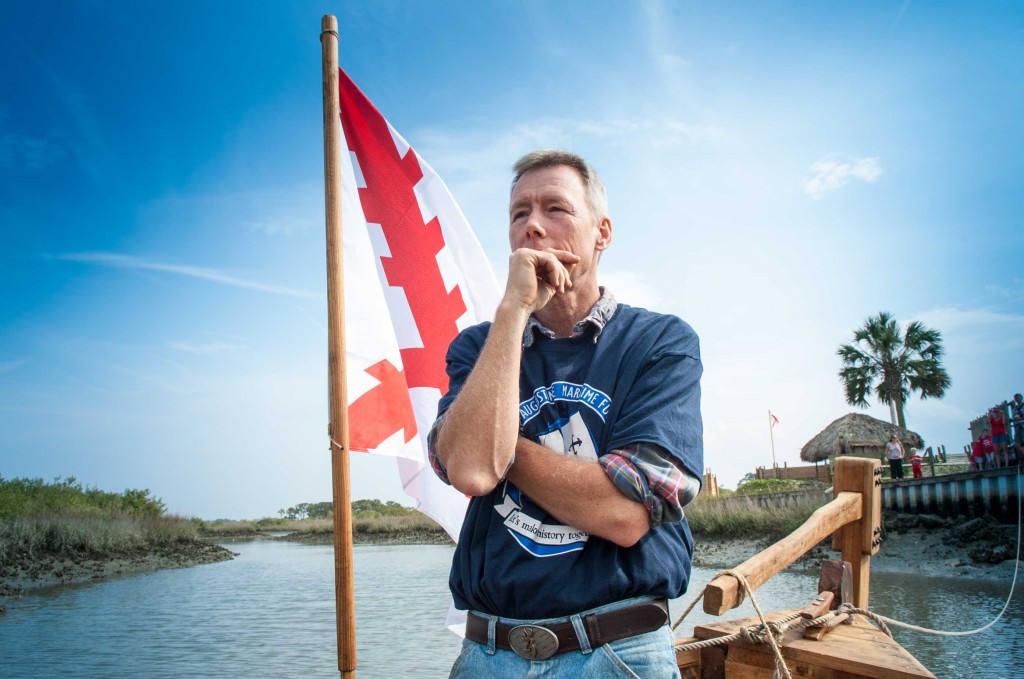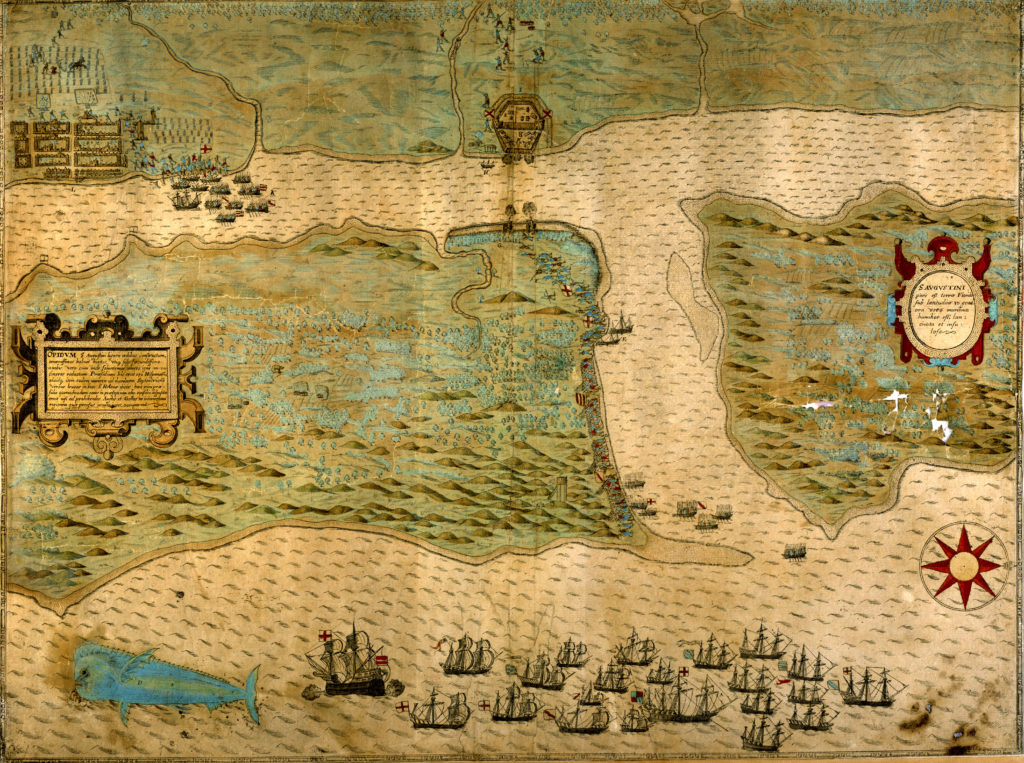This article first appeared in the St. Augustine Record on Sunday, Sept. 6th.
In 2007, the St. Augustine Lighthouse & Maritime Museum received a special category grant from the state of Florida for the First Coast Maritime Archaeology Project. In addition to funding nautical archaeology in the Nation’s Oldest Port, the grant paid for a visit to the Archive of the Indies in Seville, Spain, to obtain documents important to St. Augustine’s past.
The research trip, carried out during the summer of 2008 was conducted by the Lighthouse & Maritime Museum’s Maritime Archaeological Program, known locally as LAMP. Museum archaeologists discovered a number of documents that shed considerable light on our port City’s early Spanish maritime history.
Of great importance was the discovery of a document that listed a Spanish chalupa. When most people see the word chalupa, they think of something tasty from a Mexican restaurant. This chalupa was something quite different.
In this case, the reference was to a type of Spanish vessel that was built in St. Augustine in 1597 for the use of the St. Augustine presidio, or military establishment. The inventory listed the craft along with its masts, yards, rudder, rudder hardware, and ten oars. This documents one of the earliest examples of shipbuilding in the oldest continually occupied port city in the continental United States.
In 2007, Parks Canada published a five volume report on the archaeology of Red Bay, Labrador, where the Basque, from northern Spain, once had a thriving whaling business. In the year 1565, the very year that St. Augustine was founded, a Basque galleon called the San Juan was lost with a full cargo of whale oil. When the San Juan wrecked she crushed one of her ship’s boats – a chalupa.
This craft was 26 feet long and was rowed by six oarsmen. The Canadian archaeology report contains a set of ships lines for the Red Bay chalupa which precisely document the three dimensional shape of its hull. In addition, all the information on joinery, fasteners, mast placement, and the pulling, or rowing, arrangement for the craft is also presented.

The Padres Franciscanos Church, the oldest building in Aviles, Spain, is home to the remains of Pedro Menendez de Aviles.
Avilés, on the north coast of Spain, and the home town of Pedro Menéndez, lies to the west of Basque country. Both these Spanish provinces lie on the Bay of Biscay, one of the harshest and most dangerous bodies of water on the planet. The maritime traditions of both provinces share a common naval architecture and geography so we should not at all be surprised to find a reference to a chalupa being built in St. Augustine.
In what is doubtless the most ambitious legacy project of the 450th, the St. Augustine Lighthouse & Maritime Museum, the Fountain of Youth Archaeological Park, and the St. Augustine Maritime Heritage Foundation have come together with members of the St. Augustine community to build what is arguably one of the most historically accurate and authentic 16th century replica ships in existence.
This 450th community project is an outgrowth of the Heritage Boatworks Program at the St. Augustine Lighthouse & Maritime Museum. Under the direction of Mr. Maury Keiser, a co-founder of the Lighthouse Heritage Boatworks and the current president of the St. Augustine Maritime Heritage Foundation, the chalupa was built at the Fountain of Youth Archaeological Park. John Lubbehusen, a professional boat builder and owner of the Old Florida Boat Company was the principal shipwright. A host of volunteers pitched in to help.
The chalupa was built in a boatyard that is itself a replica of a yard that once stood in St. Augustine in the 16th century as shown on the Boazio map. This is the first known map of St. Augustine and illustrates the town, fort, and waterways of St. Augustine as Francis Drake found them in 1586. After making careful notes on the matter Drake put the town to the torch. The map was published three years later in 1589.
Combining the archaeological data and the St. Augustine documentary evidence, the chalupa lines produced and published by the Canadians were scanned and brought into a naval architectural software program by Ed Glowacki, of Glowacki Engineering in Jacksonville Florida.
Working pro-bono for the project, Glowacki took the Canadian lines and stretched them to accommodate four more rowing benches, or thwarts, that were documented for the St. Augustine chalupa. His rendering of the accurate dimensions and lines of the St. Augustine chalupa were used in its construction. Naval Architect Eric Sponberg carried out a study of the craft’s stability and like Glowacki, did the work pro-bono. Ed Glowacki and Eric Sponberg’ contributions to the project are an excellent example of the kind of support that has made this grass roots community project possible.
The building of both the chalupa and the boatyard began in November of 2011. Following a little more than three years of timber donations from area landowners and hard work by community volunteers the vessel was competed. The chalupa was launched and christened with the name San Agustín by Father Thomas Willis of the Cathedral Basilica on March 22nd of this year and given the traditional Spanish blessing of white wine, from our own San Sebastian Winery, and salt.
This is a home grown community project in every sense of the word and one of which we can all be proud. It is an inspiring example of what a community can accomplish when its members cooperate to achieve a common goal.

On Sept. 8th, 2015, the chalupa participated in a reenactment of Menendez’s first landing 450 years ago.
The San Agustín, can often be seen being rowed in the early morning hours along the Ancient City’s waterfront by its all volunteer crew. These dedicated community members are volunteers of the St. Augustine Lighthouse & Maritime Museum who sacrifice sleep in exchange for an early morning workout on the waters of the bay, bringing Nation’s Oldest Port programs forward!
At 38 feet and one inch length overall, this authentic and historic water craft embodies elegance, grace, and beauty. On September, 8th the chalupa San Agustín and her volunteer crew landed the party dramatizing the ceremonial landing of Adelantado Pedro Menéndez de Avilés on the shores of St. Augustine, 450 years ago. This event was very well attended and open to the public and dignitaries.
Read more about the plans and construction of the chalupa »
Dr. Sam Turner joined the St. Augustine Lighthouse & Museum in 2006. Dr. Turner earned his master’s in nautical archaeology at Texas A&M University and received his Ph.D. in Spanish and Spanish American studies from King’s College of the University of London.



